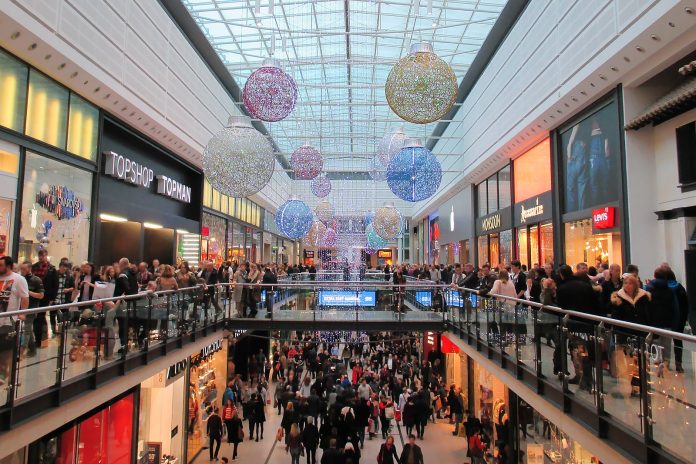Consumer card spending grew just 1.0 per cent year-on-year in May, the smallest rise since February 2021 and significantly lower than the latest CPIH inflation rate of 3.0 per cent.
Resilient categories such as airlines and takeaways were knocked by rising household bills, while wet weather continued to cast a cloud over the high street says the report from Barclays.
However, consumers are feeling optimistic about the latest inflation figures, with three in 10 planning to spend more when the weather improves.
April’s price hikes on certain essentials and household bills – including council tax and broadband – have started to impact consumer confidence.
The vast majority are worried about the impact of rising household bills on their personal finances, with increasing council tax , broadband and mobile costs , water bills , and dental costs among the top concerns.
This is likely one of the reasons why spending on non-essential items saw its smallest increase since February 2021. However, encouragingly, spending on utilities was down 12.5 per cent, thanks to the April Ofgem price cap decrease.
Brits reined in spending on takeaways and fast food in May, with the category recording its first decline since May 2020. This comes as 44 per cent say they are reducing their discretionary spending, citing ordering takeaways as their number one cutback.
Over half of these consumers are also cutting back on eating out at restaurants, with spending in this category seeing an even greater decline in May (-15.7 per cent) than in April (-13.1 per cent).
Travel, another of the UK’s typically more resilient sectors, also had a challenging month. Airlines saw their smallest uplift (5.6 per cent) since July 2021, while spend growth at travel agents was as its lowest level (4.3 per cent) since August 2023.
Similarly Entertainment spending, typically boosted by the release of summer blockbusters, saw only a modest 3.0 per cent increase. This comes as three in 10 (30 per cent) Brits say they plan to go to the cinema less often, because this summer’s blockbusters are less exciting than they have been in previous years.
On a more positive note, almost three in 10 Brits say they will spend more when the weather improves this summer – a figure which rises to 39 per cent for 18 to 34 year-olds.
Two fifths of this group plan to spend more on food and drink for picnics, a third say they’ll fork out on drinking and dining al fresco at pubs and restaurants, and 29 per cent intend to buy barbeque supplies to host friends and family in the coming months.
As the rain continued to cast a cloud over the high street, overall retail spending fell -0.4 per cent – the biggest drop since September 2022 – with in-store spending (excluding groceries) and clothing sales dropping by -2.6 per cent and -1.0 per cent respectively.
This comes as over half of the consumers who are reducing their discretionary spending say they are limiting purchases of new clothes and accessories. Over two fifths plan to re-wear more of their old summer clothes this year and 29 per cent are cutting back on shopping for their summer wardrobe due to cost-of-living concerns.
Spending at supermarkets grew just 0.3 per cent – the lowest growth since June 2022 – as April saw food price inflation fall to its lowest annual rate (2.9 per cent) since 2021. The downturn in supermarket shopping is also partly due to the comparison with May 2023, when spending on groceries surged due to Coronation bank holiday street parties and soaring food price inflation.
Karen Johnson, Head of Retail at Barclays, said: “Retailers faced a challenging May, yet the few sunnier days in the month did bring a welcome uptick in footfall. As consumers gear up to spend more with better weather, and with the Euros, Wimbledon, and Taylor Swift’s ‘Eras Tour’ on the horizon, there’s a brighter outlook for the coming months.”
Jack Meaning, Chief UK Economist at Barclays, said: ”The economic strength we saw in the first three months of the year was always expected to ease as we moved into the second quarter, with GDP having seen the extra bounce needed to recover the ground lost in last year’s recession. The underlying direction of travel remains though, with falling inflation, real income growth and low unemployment all pointing to a gradual acceleration in consumer spending over the next 12 months, especially as we begin to see the Bank of England reduce interest rates in H2.”







